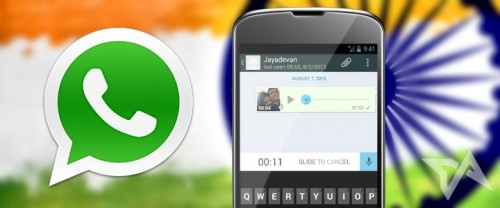We Are Social Asia Tuesday TuneUp #101
Line’s $194 million revenue, twice that of the previous quarter
According to report from TechInAsia, one of fastest growing messaging app Line recorded $194 million revenue for Q3 2013. This is a 48 percent increase from the previous quarter. The significant growth in revenue seems largely attributed by gaming which accounts for 60 percent of its’ revenue, followed by stickers which saw a 20 percent sales. Its’ gaming driven revenue model follows through its’ counterpart KakaoTalk which dominates the top 10 of Google Play’s chart in South Korea. With 280 million registered users worldwide, Line is expanding its ground beyond Japan and Taiwan and seeing growth in India, targeting to reach 20 million users by the end of the year. In addition, Turkey, Italy, and Latin America are becoming its’ new markets for expansion. In the competitive world of messaging apps, will Line continue to grow and maintain high profitability or will other chat apps come up with compelling offerings and convert Line’s users?
WhatsApp leads the chat app competition in India with 25 million MAU
According to report from Medianama, one of leading messaging apps WhatsApp reached 25 million monthly active users in India. This marks 25 percent increase as compared to three months ago. Although many other chat apps like Line try to garner share in the market with heavy advertising push, their number of registered users are not even close with WhatsApp’s number of monthly active users. It proves not only that WhatsApp is far ahead in the competition but the first-to-market advantage is not easy to break. However, it’s too early to conclude that WhatsApp will be the dominant force for chat apps given that smartphone adoption rates is still growing in the market.
Twitter, a critical communication tool for the devastating Typhoon Yolanda
Since Typhoon Yolanda hit Philippines on Friday, November 8, thousands of people have lost contact with their family. In a situation where communication lines are broke down, internet is playing a significant role in helping people connect, share information and collect aid. Google provides a crisis response map for people to find information on evacuation centers and hospitals nearby affected areas as well as a person finder to locate lost ones. As it did for other disasters, Twitter is also playing a part for individual and organization to share information and call for helps. For example, Philippines government’s Twitter account @GovPH, has been actively tweeting to recruit volunteers. Moreover, #YolandaPH hashtag has been widely used to share information. People are also using #RescuePH to call for helps for themselves and their family.
Show your support for our countrymen affected by #YolandaPH by helping repack #reliefPH goods at @dswdserves: pic.twitter.com/4D90RSUFH9
— Official Gazette PH (@govph) November 11, 2013
@MovePH we have relatives we cant contact still in Guiuan E. Samar. I hope relief efforts are not limited to tacloban only.
— Kimmie Barredo (@kidnamedkim) November 9, 2013
Please check Ormoc, Merida, Isabel, Palompon, Albuera. They need help. #ReliefPH #RescuePH
— Louise Padilla (@louiseBMDee) November 9, 2013
YouTube outdoes Facebook as favourite site for teens
It’s not just messenger apps that are eating into the social habits of teens. A survey of over 4,000 teenagers aged 12-15 found that 50% of them called YouTube their favourite site, followed by 45.2% for Facebook. The story is different for those in their twenties, though: Facebook came top with 55%, followed by Amazon with 37.5%.
More Facebook likes may not increase fan sentiment
A fictional brand called Ashwood Furnishings may have provided some insight into consumer behaviour. A Facebook page was set up for the brand for the purpose of a study, which examined how viewers of the page felt about the brand, based solely on the number of likes. As fan figures increased from zero (low) to 2,000 (medium), page viewers felt more positive about the brand; however, this trailed off as the page approached a high figure (10,000+).

New Facebook ‘like’ and ‘share’ buttons
Facebook has updated its ‘like’ and ‘share’ buttons. Look, look at them:

Good, now you’ve seen them. You’ll see them even more over the coming weeks, as they start getting rolled out gradually.
Facebook testing star ratings for pages
Facebook is testing a star rating (out of five) for pages, which will allow users to rate their favourite (or least favourite) businesses and thus produce a more accurate rating system than the number of likes. Naturally, this has consequences for both users and brands – for whom it isn’t yet clear if the system will be optional or mandatory.

Instagram is the fastest growing social network among marketers
Instagram’s uptake among marketers of the world’s 100 largest brands has rendered it the fastest growing social network amongst said group. Accounts are now held by 71% and active accounts by 65%, compared with 42% in the same quarter in 2012. Growth is also shown in the number of pages posting 1+ photo per week and those reaching the milestones of 10,000, 20,000 and 100,000 fans.

Instagram CEO says 5% of ad views lead to likes
Kevin Systrom, CEO of Instagram, has claimed that over 5% of ad views on the network lead to likes:
Over 5 per cent of the impression led to likes on these ads that we’ve run. That’s pretty tremendous considering most of the ads we see on the internet we ignore.
If the figures are true, his opinion is probably correct. However, figures from a Michael Kors post, the first ever advertised on Instagram, suggest that he may not be: according to analytics company Nitrogram, the update reached 6.15 million people and received over 218,000 likes – a like percentage of 3.57%.
Twitter’s redesign may have increased engagement
Twitter’s more visual redesign looks to have increased engagement across the network, according to some key sources. Klout’s head of marketing, Jon Dick, has said that:
Looking at some of our high-level volume numbers, we’ve seen as much as a 10% increase in engagement among Twitter users.
This is backed up by the founder of Twitter tracking service Favstar.fm, Tim Haines, who says:
It looks like favs and RTs have jumped 10–15%-ish amongst my users.
It’s worth noting that these are, of course, very early figures and not necessarily illustrative of long-term change.
Google link YouTube comments to G+
Google has linked YouTube comments to Google+, in a move that has caused controversy among users of the network. The new comments allow certain social aspects, such as mentioning your G+ contacts in a YouTube comment and are explained further in the following video.
However, many people were hugely unhappy with the changes – not least YouTube co-founder Jawed Karim, who posted the below, his first update for eight years. Eek.

Google+ introduces ‘restricted communities’
Google+ has announced the launch of ‘restricted communities’, a feature that prevents users who are not members of a given organisation from joining. The system is aimed at allowing businesses to create private or invite-only communities, as an extra layer of security.


